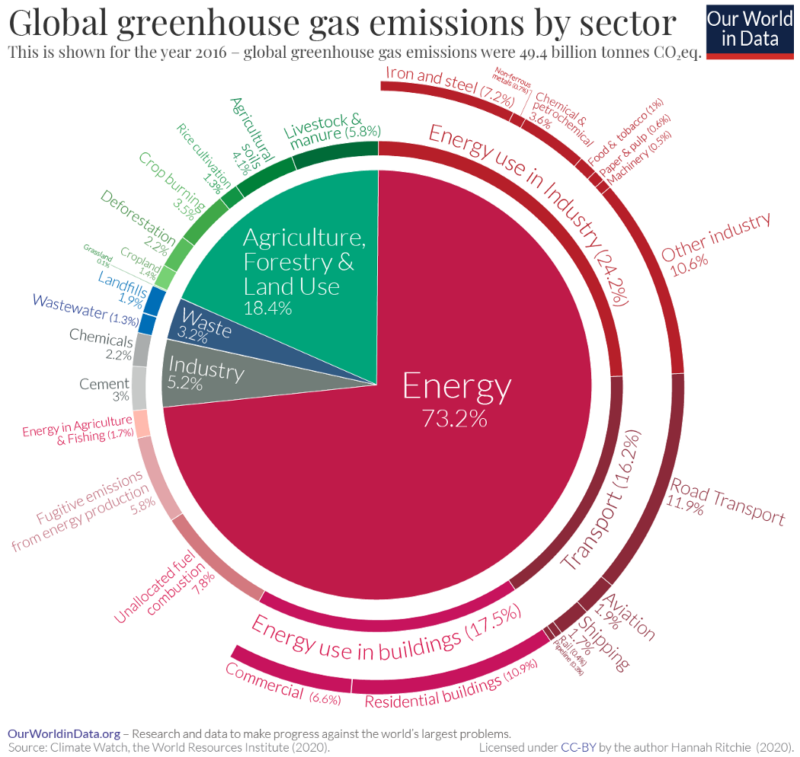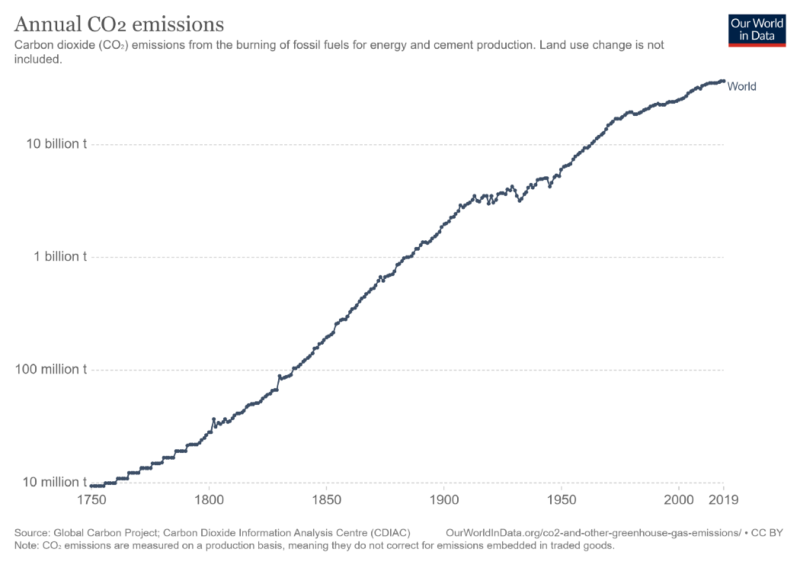According to Digiconomist, Bitcoin’s (BTC) annual carbon footprint equals that of Switzerland (40 Mt CO2) because running its network is power-intensive, consuming approximately as much power as Finland requires in a single year (85 TWh).
The numbers for Ethereum (ETH) are smaller (14 Mt CO2, which is about the same as the annual CO2 emissions of the video platform YouTube, and 29 TWh, which comes close to the annual power consumption of Ireland).
Looks massive and sounds bad. But let’s put these numbers into perspective.
Below is a chart from Our World in Data which shows all global greenhouse gas emissions by sector for the year 2016.

The data included in that pie chart is more than four years old; however, with the exception of the year 2020 when CO2 emissions declined because of the pandemic, annual emissions have been rising fairly consistently historically (see log chart below). [Source: Our World in Data]

Let’s now integrate the BTC and ETH numbers from above into the same pie chart. This shows that BTC and ETH are responsible for 0.11% of all CO2 emissions worldwide per year.

Currently, BTC and ETH are by far the two largest tokens in terms of their market capitalizations. Since the blockchain operations of other tokens also cause emissions, we could/should increase the above number from 0.11% to, say, 0.2% (my own guesstimate). However, we’d also need to move this number down again because a growing part of current mining activities use renewable sources of energy which do not emit carbon. Last but not least, when crypto mining farms cooperate with local transmission system operators (TSOs) to better balance the electrical grid, it helps to make the overall power generation more efficient and less carbon intensive, which would also have a reducing effect.
Summarizing, it seems we’re talking about a number that’s around the 0.15% level of all yearly CO2 emissions globally. I wanted to have a look at these numbers on my own because there’s a lot of commentary out there saying that digital assets are super bad for the environment. I’m not saying they are not, but the dominating narrative in the media is that crypto assets are “CO2 monsters” which cause more than 20%, 30%, or even 40% of all emissions globally. This simply doesn’t match up with the data.
And by the way, if digital tokens move on to transform our existing financial infrastructure, replacing the current old-school payment rails with faster and more efficient settlement technologies, this could result in a net reduction of emissions because a lot of the current systems, which also produce carbon, would be turned off.





